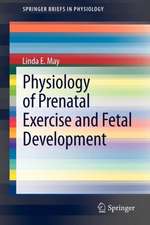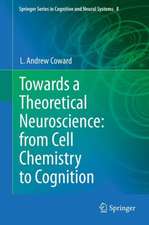Application of Selected Reaction Monitoring to Highly Multiplexed Targeted Quantitative Proteomics: A Replacement for Western Blot Analysis: SpringerBriefs in Systems Biology
Autor Michael Kinter, Caroline S. Kinteren Limba Engleză Paperback – 18 sep 2013
Preț: 358.32 lei
Preț vechi: 377.18 lei
-5% Nou
Puncte Express: 537
Preț estimativ în valută:
68.57€ • 71.33$ • 56.61£
68.57€ • 71.33$ • 56.61£
Carte tipărită la comandă
Livrare economică 15-29 aprilie
Preluare comenzi: 021 569.72.76
Specificații
ISBN-13: 9781461486657
ISBN-10: 1461486653
Pagini: 80
Ilustrații: XIII, 65 p. 14 illus., 11 illus. in color.
Dimensiuni: 155 x 235 x 4 mm
Greutate: 0.16 kg
Ediția:2013
Editura: Springer
Colecția Springer
Seria SpringerBriefs in Systems Biology
Locul publicării:New York, NY, United States
ISBN-10: 1461486653
Pagini: 80
Ilustrații: XIII, 65 p. 14 illus., 11 illus. in color.
Dimensiuni: 155 x 235 x 4 mm
Greutate: 0.16 kg
Ediția:2013
Editura: Springer
Colecția Springer
Seria SpringerBriefs in Systems Biology
Locul publicării:New York, NY, United States
Public țintă
ResearchCuprins
The use of mass spectrometry for highly selective detection.- overview of how the selected reaction monitoring experiment works.- Designing a selected reaction monitoring method for a protein.- Example analyses include: sample processing, sample analysis, data processing.- Future Directions.
Caracteristici
Explains both the theoretical and experimental details of the selected reaction monitoring experiment as it is applied to proteins? Describes a new type of quantitative proteomics experiment called selected reaction monitoring Reviews the experiment result of a robust and powerful method to measure the abundance of a protein in complex samples Includes supplementary material: sn.pub/extras

























